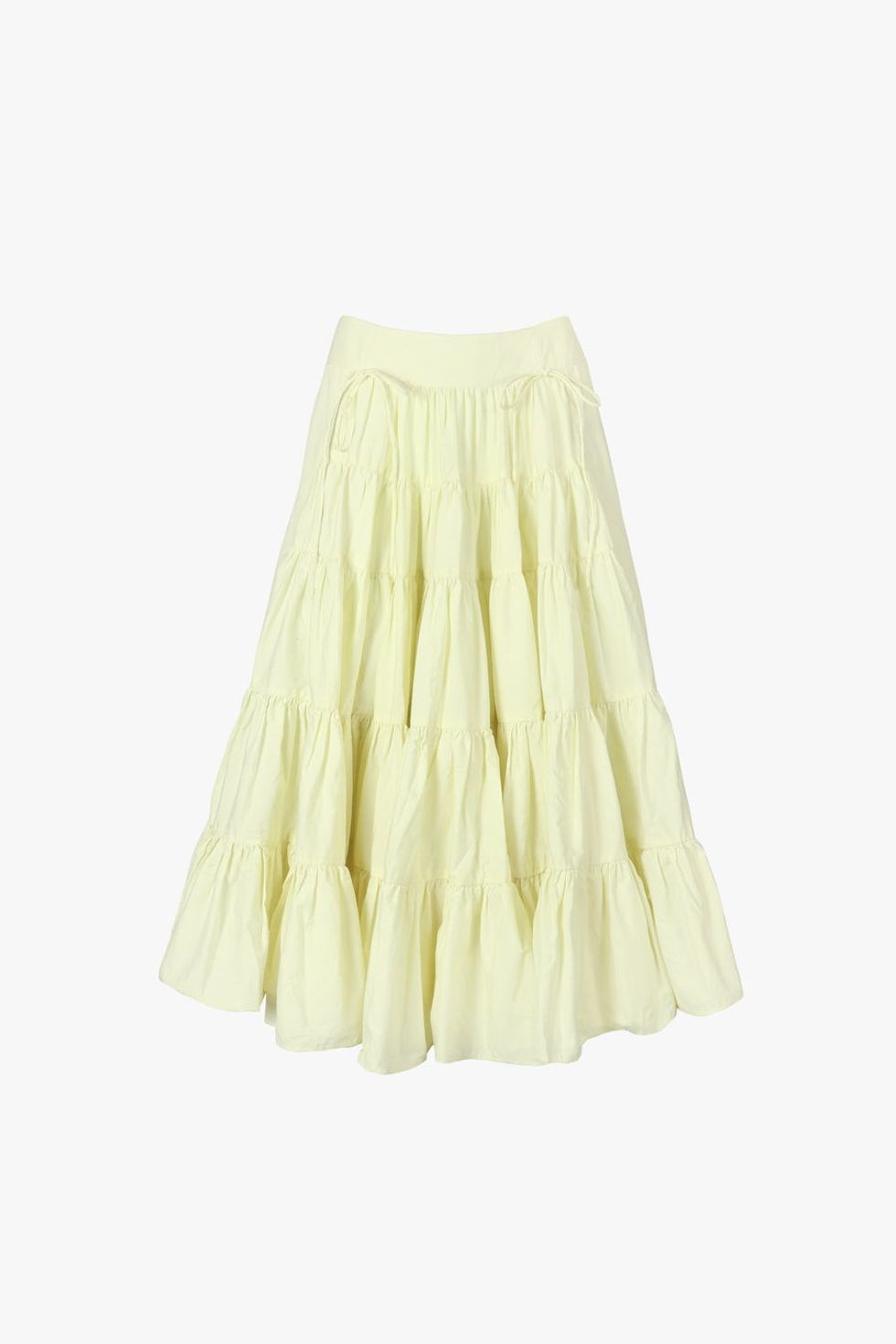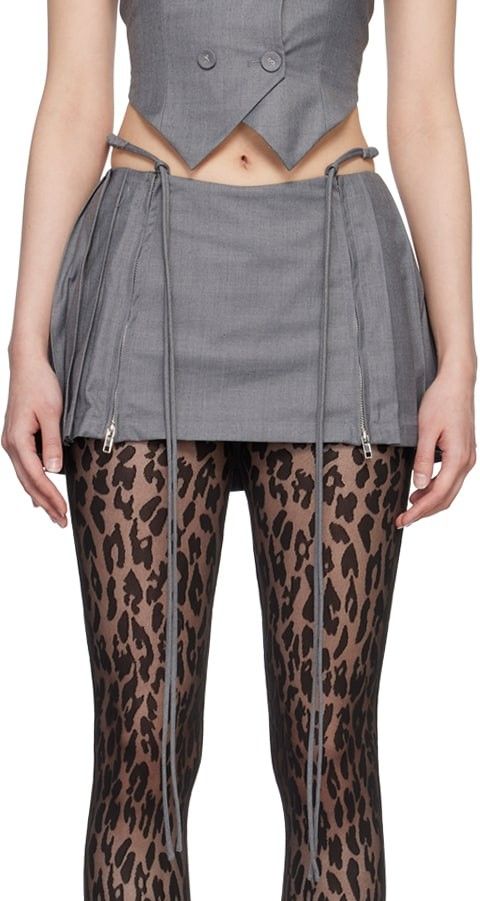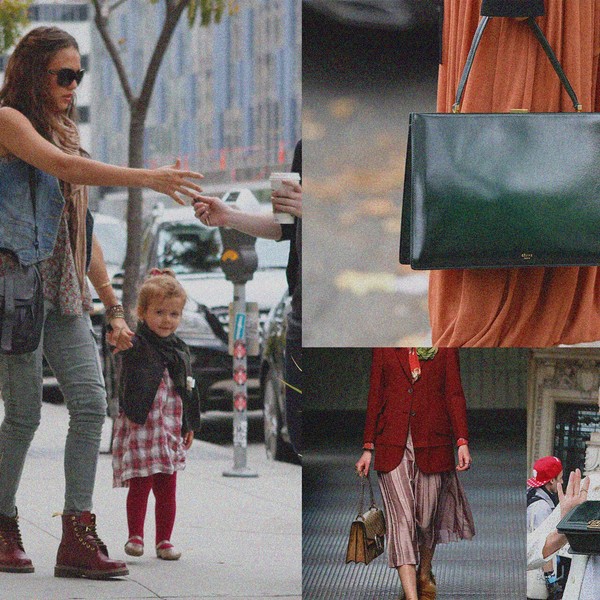What Do You Get When You Combine Two of Fashion’s Biggest Trends?
Why, a “blokette,” of course.

As a child of the late ‘90s early 2000s, I grew up in a world with two distinct and unflappable camps: the tomboys and the girly girls. Picture recess, with the latter stationed firmly on the soccer field (after they had zipped off the shin portion of their convertible pants), the former swinging from (or more likely perched upon) the monkey bars. The uniform of each adhered to rigorous standards. No bows on the field. No cleats with pink tulle. I went through eras of both, but never did they overlap.
“When you’re a kid, fashion and sport are often pitted against each other,” says Biz Sherbert of the Nymphet Alumni podcast, “but now we’re seeing the fashion crowd wearing jerseys and soccer trainers.” If you’ve glanced at a Wales Bonner collection recently, you’ll see that the confluence between fashion and sports extends further than a jersey on the back of a pub crawler. In their Spring ‘24 collection, models don warm-up jackets with knee-length skirts, and knit tanks with track pants. The latest edition of their cult collaboration with Adidas takes the form of a metallic silver soccer-cleat-esque sneaker. Another of fashion’s buzziest designers, Martine Rose, dressed the United States Women’s National Team for their first seasonal match.
But all of this evidence comes to a verdict in the style of the trend world’s darling: Bella Hadid, Adidas sneakers, moto jackets, performance sunglasses, and all. It’s this tantalizing mix of sporting tropes sugarcoated in femininity that sparked the interest of Sherbert, along with co-hosts Alexi Alario and Sam Cummins. Alario coined the term “blokette” (a riff on TikTok’s “bloke core”) to describe this particular trend, which they’ve since dissected at length. Amidst the Fifa Women’s World Cup, essentially the culmination of these two forces, they’ve noted the trend is still going strong, though it has just as great a place at a coffee shop in Nolita. To make sense of this world where Adidas’ three stripes are as ubiquitous as the Starbucks mermaid, we’ve asked the Nymphet Alumni podcasters to break down the sartorial movement for us.
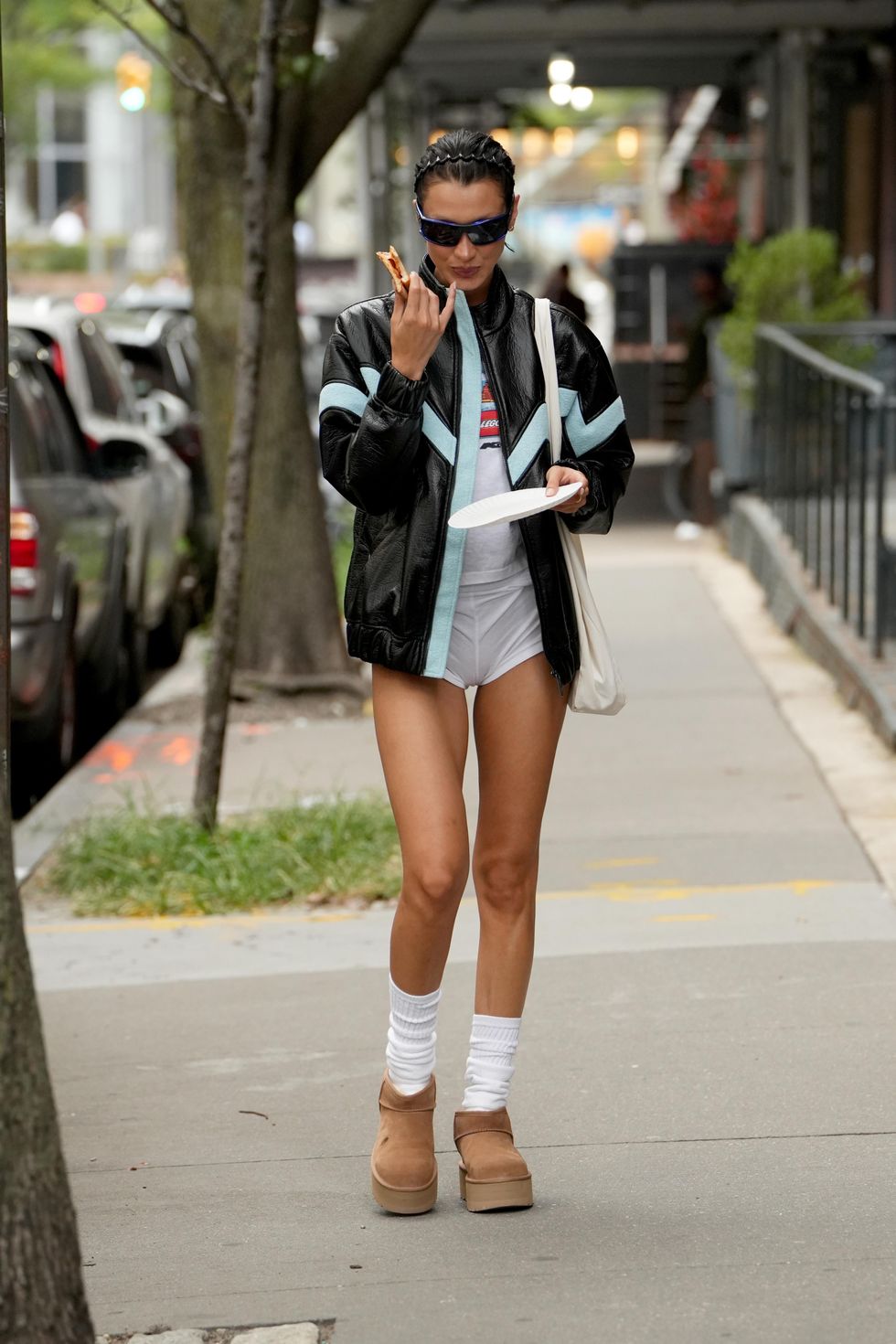
Photo: Getty Images
How would you define the “blokette” trend? What characterizes this manner of dressing? Is it merely the feminine adaptation of men’s “bloke” core?
Alexi Alario: “Blokette is a portmanteau of ‘bloke’ and ‘coquette.’ I came up with this term in October of last year when we began noticing fashion girls styling vintage sportswear, especially Adidas, in really whimsical and girly ways, spearheaded by perennial trendsetter Bella Hadid. This was also right before the World Cup, so we were doing a bit of a predictive report. blokecore, though we were definitely influenced by it, belonged to the boys at this point and was as much about wearing retro kits as it was about shag mullets and cheeky mustaches. I think we also wanted to divest from the footy poseur discourse and focus on the formal possibilities and influences of girly sportswear, as well as the greater legacy of sportswear in fashion.”
What initially sparked your interest in this movement? How has it evolved since you coined the term?
Biz Sherbert: “We’ve always been interested in the ‘girl culture,’ and blokette is a part of that—‘coquette,’ and its accouterments from hair ribbons to slouchy socks, is quite literally half of what makes the look. We also saw a major amount of fanfare around looks worn by Bella Hadid that were squarely blokette—literal think-pieces were written about the time she wore stretchy short shorts, slouchy socks, and a sporty plastic headband to grab a slice of pizza. Plus, blokette felt somewhat unique—when you’re a kid, fashion and sport are often pitted against each other, but now we’re seeing the fashion crowd wearing jerseys and soccer trainers.”
Alario: “In regards to how it’s evolved, there literally just wasn’t a name for this look before we publicized it on the podcast, so we’ve been able to see the aesthetic crystallize into its purest, most refined essence in real time since. I remember when we made our initial blokette Pinterest board, we were really having to cobble it together from scratch based on disparate things we’d spotted. But since we spoke it into existence, we now see these blokette outfits that are really formulaic and obviously made by someone who began with a definite sense of blokette already in their mind. I’ve also already crowned blokette’s successor, broquette, which is all the rage this summer—you can hear all about it in our recent episode!”
Sam Cummins: “There are many aspects of blokette that aligned with a trajectory we were already exploring on the podcast. The arrival of the World Cup coincided with a growing interest in a new type of digital globalism, broken down in our Global South-core episode, that manifested in the street style of the modern metropolitan woman. The analogy is a bit obvious, but global interconnectivity seems to foster social investment in sportswear. Sports, like digital images or fashion trends, are a universal language used to convey messages that transcend cultural barriers. There’s also this sporty vibe of communal celebration that feels very attractive in an age of alienation. This is one of the reasons we devised a spinoff to blokette, Broquette! With the arrival of summer, we wanted to explore fashion trends that encourage a raunchy, active, happy-go-lucky lifestyle.”

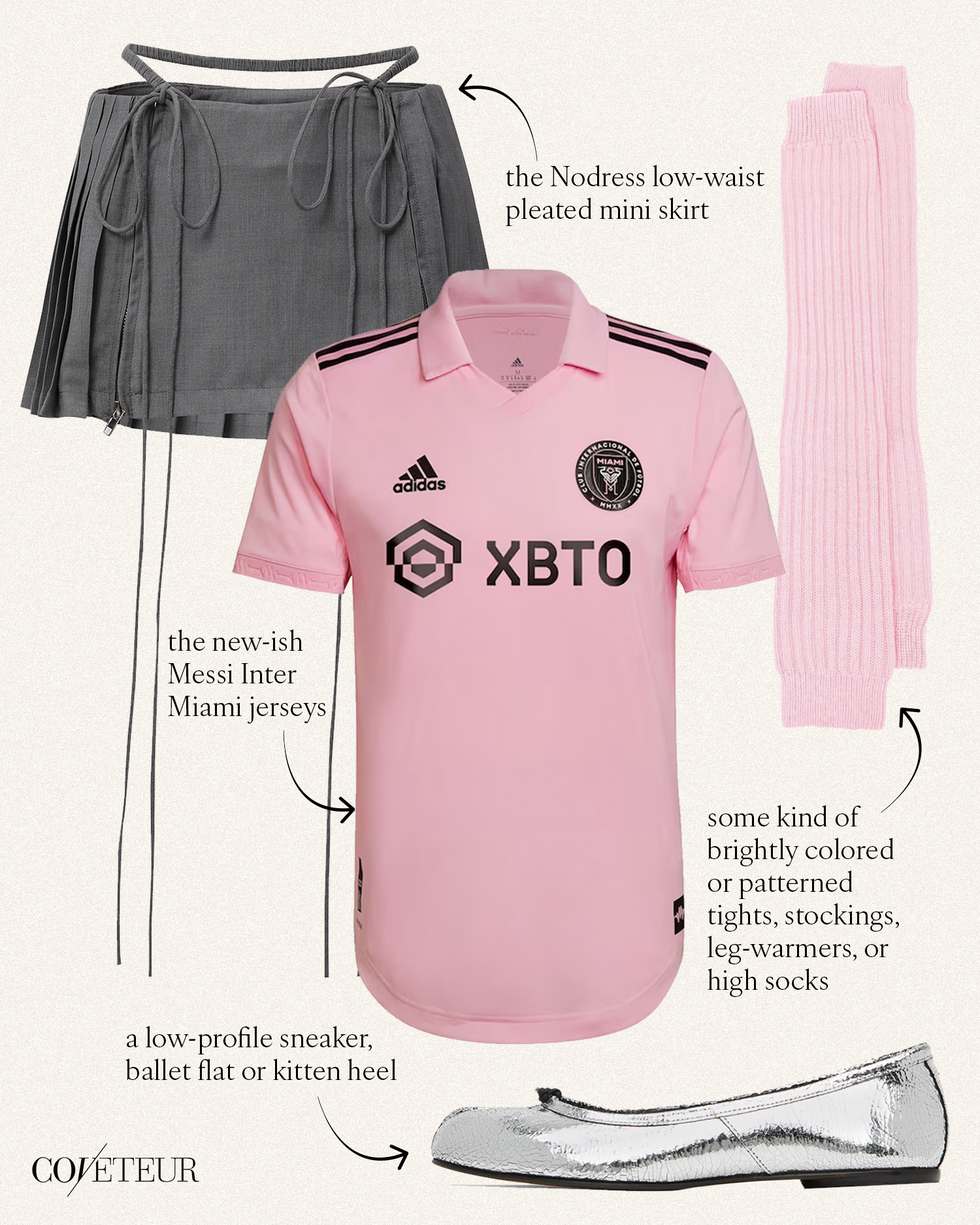
You’ve obviously gone into extensive detail in your podcasts, but at a glance, what/who are the largest influences that you think inspired this manner of dressing (designers, style icons, larger cultural shifts, geographic location, etc)?
Sherbert: “Bella Hadid, Britpop bands like Oasis and Blur, and the overall popularity of coquette. In terms of geographic location, I don’t see this style quite as much out and about in London—I think it’s a little too close to home in countries where football/soccer culture is really big.”
Alario: “There’s also a sense of personal childhood nostalgia for a lot of people, in that most American kids play youth soccer as an extracurricular activity at some point, but not a lot of them stick with it and continue to care about soccer into adulthood. Also, being a spunky tomboyish ‘soccer girl’ was such a defining trait in the early 2000s, as seen in iconic films like Bend It Like Beckham (2002) and She’s The Man (2006). So in that sense, blokette is definitely an extension of Gen Z’s proclivities toward Y2K and what I like to call ‘inner child consumerism.’ It’s also really easy to thrift a blokette look as vintage sportswear is easily available secondhand.”
Cummins: “Adidas has achieved sportswear hegemony in the 2020s, and we were privy to its takeover pretty early on. We wanted to strike while the iron was hot and explicate the vibe as soon as we clocked it. Adidas has now embraced the term blokette, which is actually really random and cool. Another thing that seemed to aid in blokette’s growth was the shift from the pandemic to the ‘real world.’ The pandemic created the loungewear apocalypse; WFH encouraged everyone to wear Skims sets and Lululemon leggings at all times. This wasn’t sustainable once the world opened up, but I think people became attached to the vibe of comfortable clothing. Blokette allowed girls to retain the comfort and breathability of loungewear while adding a chic little twist.”
Do you think it actually coincides with larger sporting events (i.e. the world cup), or has it taken on a life of its own?
Alario: “Last year’s World Cup was definitely a major influence in the popularity of blokette, in part because the practice of occasion dressing is such a tried-and-true content strategy online (e.g. Get Ready With Me for a World Cup Party or other forms of outfit inspo videos). Blokettes around the globe really showed up to rep their teams, which made the aesthetic more meaningful and energetically charged. A recent Vogue article also just highlighted some blokette street style looks from the currently ongoing Women’s World Cup! So there is a correlation—but blokette also just seems to be a go-to aesthetic for downtown girls getting iced lattes, so it definitely doesn’t disappear between the seasons.”
What do you think it reveals about our current state of society (at least among those adopting this trend)?
Sherbert: “I think people just want to have fun. The last few years of fashion have felt overly serious and dramatic in some ways. The downcast techno vibe of Balenciaga felt like the main tone in high fashion, and people were constantly arguing about the legitimacy of microtrends and niche aesthetics. Blokette doesn’t exist outside of that framework, but it does feel like a bid for something less serious. After all, it’s about wearing clothes that are supposed to be grass-stained and sweated in.”
Alario: “There is something really juvenile about blokette that adds to its appeal but also highlights a generational aversion to the conventions of structured ‘adult’ fashion. In combining stereotypically masculine and feminine elements, blokette also represents stylistic androgyny in a way that’s more playful and casual than the shapeless neutral sacks that are often marketed as ‘genderless fashion.’ I also find it nice that it’s a nod to (for lack of a better term) normal people fashion—it’s not freaking-out-the-neighborhood alternative, just a fashiony spin on fairly commonplace garments. For example, my dad loves when I dress blokette—it’s brought our family closer together.”
Cummins: “To reiterate on previous points, blokette signals a longing for the irreverent and joyful spirit of communal activity. Sports have always acted as a proxy world theater, you can feign animosity towards an opposition and essentially go to war for your team, but the importance of good sportsmanship helps foster a sense of mutual respect and healthy competition. It signals a positive release of pent-up energy.”
If each of you were to style a quintessential "blokette" outfit, what would it entail?
Cummins: “This style has really taken off, and it’s become quite formulaic. The typical elements include a ribbon-adorned updo, an Adidas Jersey or track jacket, some long frilly skirt, and sambas. I would personally like to see blokettes embrace those knock-off Ralph Lauren polos with the massive polo man on them. Pop that collar! Pair it with plaid pastel board shorts, JC Penny the look. Would love to see that!”
Alario: “I’d be remiss if I didn’t mention the new-ish Messi Inter Miami jerseys, which are a delicious shade of carnation pink. So that’s on top…and then perhaps the Nodress low-waist pleated mini skirt on the bottom (recently saw a girl wearing this at my K-pop dance class, very cute). Also, some kind of brightly colored or patterned tights, stockings, or high socks, or perhaps even the Alo Yoga Goddess Leg Warmers–one of my favorite accessories. Finish it off with a low-profile sneaker, ballet flat, or kitten heel, and garnish with ribbons to taste. One styling tip: we often see a lot of slicked-back hairstyles with elaborate braided pigtails and zigzag parts with blokette looks, but I say big messy hair with a lot of texture can be quite chic, as a nod to the original frazzled tomboy style, especially if executed in an intentional and editorial way.”
Sherbert: “Another really essential element is the colors of the Brazilian flag—green and yellow have never been more global.”



